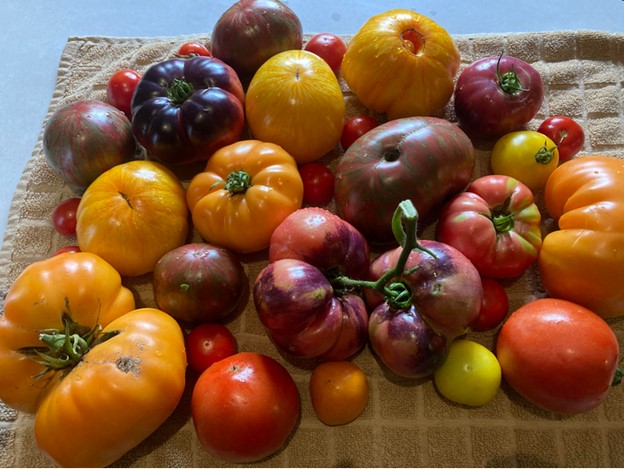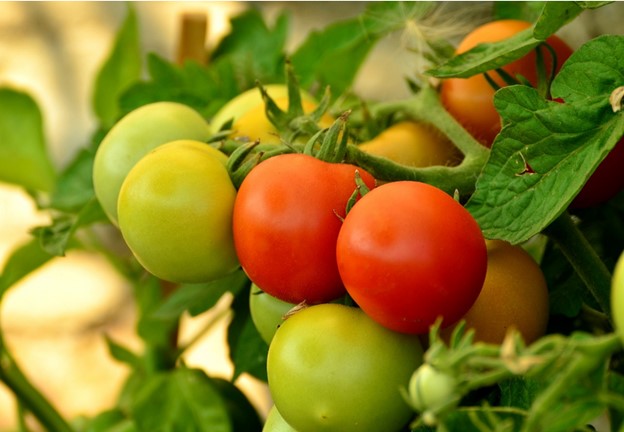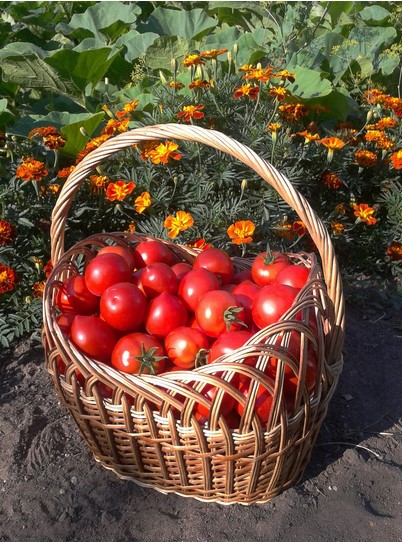In the world of tomato gardening, two words often rise to the surface – determinate and indeterminate. They may sound technical, but understanding these terms can radically transform your growing experience.
If you’re hoping for a long season of harvests and a lush, thriving garden centerpiece, indeterminate tomatoes are your botanical best bet.
These plants are vigorous growers, towering climbers, and generous fruit bearers that don’t just give you one harvest—they give you many. Let’s explore what sets them apart, how to grow them successfully, and why they might be the crown jewel of your garden and how to take care of tomato plants.
What Are Indeterminate Tomatoes?
Table of Contents

At their core, indeterminate tomatoes are defined by their continuous growth habit. Unlike determinate (or “bush”) varieties—which grow to a fixed size and produce fruit in a short, concentrated burst—indeterminate tomatoes will keep growing, flowering, and fruiting until they’re killed by frost or disease.
Think of them as the tomato plant equivalent of a marathon runner: they pace themselves, stretch out, and keep going…and going. Their growth isn’t limited by genetics but by time and temperature. Some varieties can reach heights of 12 feet or more, which is both impressive and—if left untrained—a bit unruly.
The Botanical Mechanics – Why They Don’t Stop

The secret to their growth lies in their meristem—the part of the stem that generates new cells. In the determinate tomatoes, this tip eventually develops into a flower cluster, halting further stem elongation. In indeterminate types, the meristem keeps extending, producing leaves and flower trusses in a repeating pattern along a central vine.
This means that while you’re enjoying ripe tomatoes at the bottom of the plant, new flowers—and eventually new fruits—are forming at the top. It’s a beautifully layered process that rewards patience and care with a season-long cascade of produce.
The Advantages of Growing Indeterminate Tomatoes

So what’s in it for the grower? Here are the advantages of growing indeterminate tomatoes:
1. Extended Harvest Season
Because they don’t set all their fruit at once, indeterminate tomatoes allow for a steady supply over the entire growing season. This is ideal for home gardeners who want daily freshness rather than a bulk harvest meant for processing or canning.
2. Superior Flavor Variety
Many of the most flavorful heirlooms and gourmet tomatoes fall into the indeterminate category. Varieties like Cherokee Purple, Brandywine, and Green Zebra are renowned for their complex flavor profiles—smoky, sweet, tangy, and rich. These aren’t just tomatoes—they’re experiences.
3. Visual Appeal and Garden Structure
With proper support, indeterminate plants can become architectural features in your garden. Their height and lush foliage make them attractive vertical elements, and when laden with fruit, they become a showpiece of abundance.
The Challenges of Growing Indeterminate Tomatoes

Of course, anything worth growing requires some attention—and indeterminate tomatoes are no exception. Their vigorous nature means they also demand more involvement than their determinate cousins.
1. Support Is Essential
These plants are not self-supporting, which means you’ll need sturdy trellises, cages, or stakes to keep them upright. Without support, they’ll sprawl across the ground, making fruits vulnerable to pests, rot, and disease. A strong vertical support system not only helps the plant grow upward but also improves air circulation and sun exposure, both of which are crucial for fruit development and disease prevention.
2. Pruning Pays Off
To maintain plant health and direct energy toward fruit production, many gardeners practice sucker pruning—removing the small shoots that appear between the main stem and branches. While not strictly necessary, pruning helps manage growth, improves airflow, and reduces the chance of disease. It also makes harvesting easier.
3. Ongoing Maintenance
Because these plants keep growing, they also keep needing attention. Tying them to supports, feeding them regularly, and keeping an eye out for pests and diseases are all part of the process. It’s a long-term relationship—not a one-night stand.
Popular Indeterminate Varieties
Here are some superstar varieties you’ll want to meet:
– Brandywine (Heirloom): Known for its large, pink fruits and complex, sweet flavor. A top choice for tomato connoisseurs.
- Cherokee Purple – Deep reddish-purple fruit with a rich, smoky taste. Beautiful and delicious.
- Sungold – A cherry tomato variety that produces bright orange, ultra-sweet fruits—great for snacking right off the vine.
- Black Krim – Dark, dramatic, and full of umami-rich flavor. It’s a favorite in gourmet kitchens.
- Mortgage Lifter – With fruits that can weigh over a pound each, this variety is as legendary for its story as its productivity.
Each of these offers its own blend of appearance, flavor, and texture, making it easy to find one that fits your taste and style.
Growing Tips for Success

Indeterminate tomatoes thrive under the right conditions. Here’s how to keep them happy and productive:
1. Choose a Sunny Location
Tomatoes are sun-worshippers. Give them at least 6 to 8 hours of direct sunlight per day for best results. More sun means more energy for flowering and fruiting.
2. Use Well-Drained, Rich Soil
These plants are heavy feeders. Amend your soil with compost or well-rotted manure to give them a strong nutritional base. Ensure good drainage to prevent root rot.
3. Water Consistently
Inconsistent watering can lead to problems like blossom-end rot and fruit splitting. Deep watering once or twice a week is better than shallow daily watering. Consider using mulch to retain soil moisture and suppress weeds.
4. Feed Regularly
A balanced fertilizer—or one slightly higher in phosphorus and potassium—can support robust fruiting. Avoid too much nitrogen, which encourages lush foliage but fewer fruits.
When and How to Harvest

Indeterminate tomatoes ripen gradually. You’ll notice the lower fruits ripen first, followed by those higher up on the plant.
Pick tomatoes when they are fully colored and slightly soft to the touch. Harvesting regularly encourages further fruiting and helps maintain plant health.
Wrapping Up
If you enjoy the process of gardening as much as the harvest, indeterminate tomatoes are an immensely rewarding choice. They’re ideal for gardeners with a bit of time, a bit of vertical space, and a love for watching things grow wild—yet with intention.
The extended season, superior flavor, and eye-catching growth habits are compelling reasons to give them a try. Sure, they’re a bit higher maintenance—but for many, the reward far outweighs the effort.
Leave a Reply